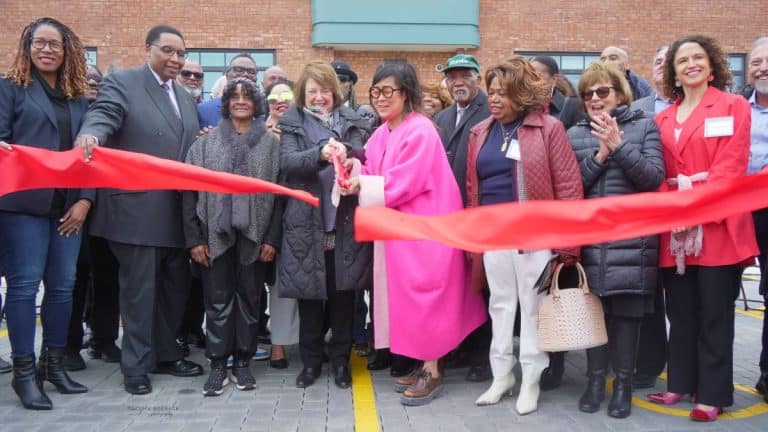CHICAGO DEFENDER: Chicago, IL – The battle over affordable housing has raged for decades in Chicago, where Black and Brown communities have long been disadvantaged and caught in the middle. Public housing, with its complicated history of promise and neglect, is no exception.
Now, a new chapter begins—on the 57th anniversary of Dr. Martin Luther King Jr.’s assassination, less than five miles from the North Lawndale apartment where the civil rights leader lived while fighting housing discrimination in the city.
On the Near West Side, a project nearly 20 years in the making has finally come to life. The National Public Housing Museum, located at 919 S. Ada Street in the last remaining building of the Jane Addams Homes, officially opened its doors Friday. It is the first cultural institution in the country dedicated to telling the story of public housing through the voices of those who lived it.
The museum uplifts the lives and legacies of public housing residents—sharing their hopes and aspirations alongside their struggles.
“This is the preservation of vital history stories. When oppressive regimes come in, they try to eliminate history and our culture. Because if you can take away someone’s story, you can take away your existence. So we are building not just stories, but a more just and ethical society,” said Mayor Brandon Johnson.
The museum’s foundation wasn’t just poured in concrete. It was laid in memory, care, and community. Organizers made it a point to center people with lived experience in public housing at every stage of the process.
“This museum was built by hundreds of dedicated people who have made it a reality,” said Sunny Fischer, Co-Founder and Board Chair. “They shared their stories, and they patiently provided their labor and love and support over the last 18 years. As a Site of Conscience, we join museums around the world committed to telling complicated and difficult stories, preserving history, and imagining a more just future.”
Francine Washington, who chairs the Central Advisory Committee for the Chicago Housing Authority and serves on the museum’s board, emphasized the deeper purpose behind the project.
Photo Credit: Tacuma R. Roeback



